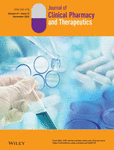Influence of CYP3A4*22 and CYP3A5*3 combined genotypes on tacrolimus dose requirements in Egyptian renal transplant patients
Abstract
Background
Tacrolimus is a widely prescribed immunosuppressant agent for kidney transplantation. However, optimal dosing is challenging due to its narrow therapeutic index, potentially serious adverse effects, and wide inter-individual variability in pharmacokinetics. Cytochrome P450 3A (CPY3A) enzymes metabolize tacrolimus, so allelic variants such as CYP3A4*22 and CYP3A5*3 may contribute to individual differences in pharmacokinetics and therapeutic efficacy of tacrolimus. This study assessed the frequency and influences of CYP3A4*22 and CYP3A5*3 genotypes, alone and combined, on tacrolimus pharmacokinetics and dose requirements in Egyptian kidney transplant patients.
Methods
This is a prospective multicenter observational cohort study. Patients were genotyped for the CYP3A4*22 (rs35599367), and CYP3A5*3 (rs776746). Tacrolimus dose (mg), through blood level (ng/ml), and dose-adjusted trough concentration (C0/D) (ng/ml per mg/kg) were recorded during the first and third months post-transplantation and compared among genotype groups.
Results
The CYP3A4*22 allele was rare (3.2% of subjects) while the CYP3A5*3 allele was widespread (90.38%) in this cohort. At the third month post-transplantation, median C0/D was significantly higher among CYP3A4*22 carriers than CYP3A4*1/*1 (146.25 [100–380] versus 85.57 [27–370] ng/ml per mg/kg, p = 0.028). Patients harbouring the one copy of the CYP3A4*22 allele and the CYP3A5*3/*3 genotype (n = 5) were classified as poor tacrolimus metabolizers, the CYP3A5*3/*3 plus CYP3A4*1/*1 genotype as intermediate metabolizers (n = 60), and the CYP3A4*1/*1 plus CYP3A5*1/*1 genotype as normal metabolizers (n = 13). During the first month post-transplantation, C0/D was significantly greater in poor metabolizers (113.07 ng/ml per mg/kg) than intermediate and normal metabolizers (90.380 and 49.09 ng/ml per mg/kg) (p < 0.0005). This rank order was also observed during the third month. Acute rejection rate and renal function at discharge did not differ among genotypes.
Conclusion
Pharmacogenetics testing for CYP3A4*22 and CYP3A5*3 before renal transplantation may help in the adjustment of tacrolimus starting dose and identify patients at risk of tacrolimus overexposure or underexposure.
CONFLICT OF INTEREST
The authors declare that the research was conducted in the absence of any commercial or financial relationships that could be regarded as a potential conflict of interest.
Open Research
DATA AVAILABILITY STATEMENT
The data that support the findings of this study are available from the corresponding authors upon reasonable request.




